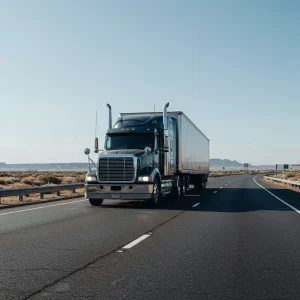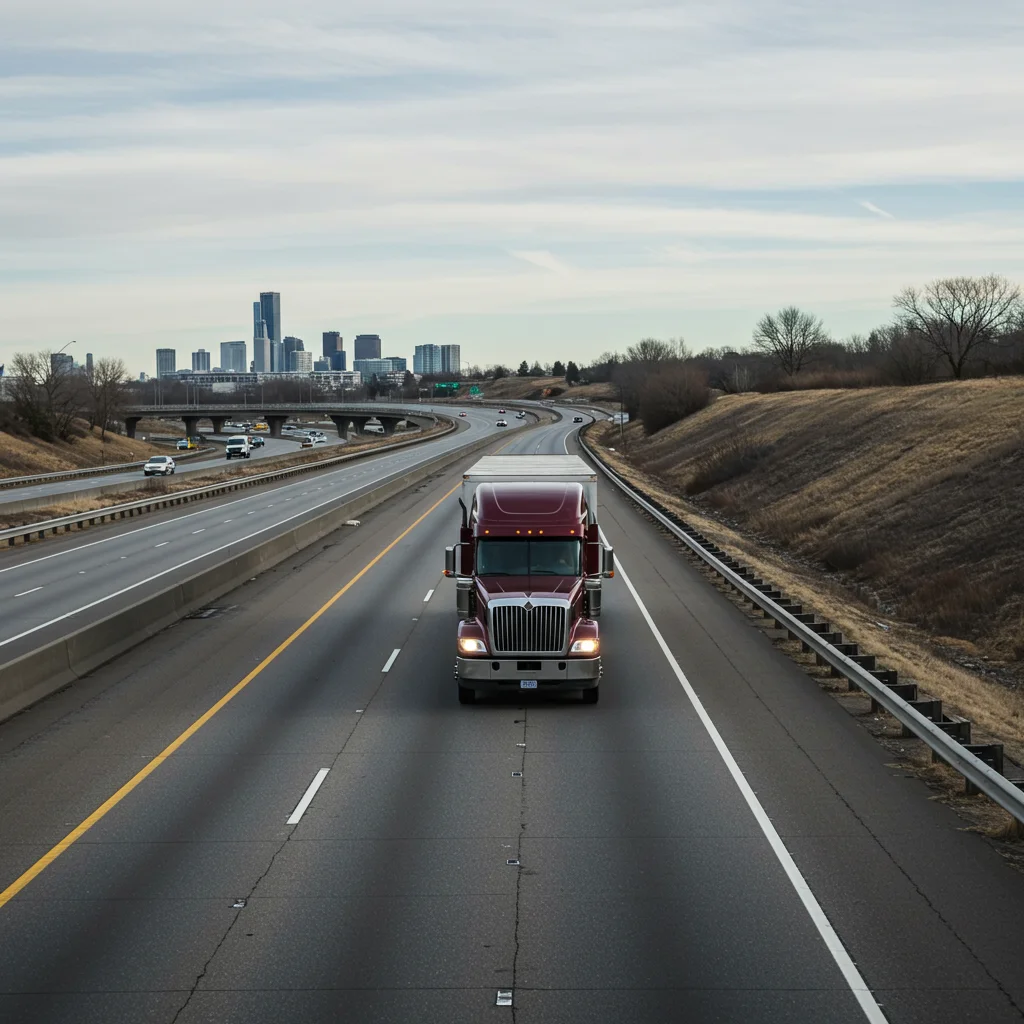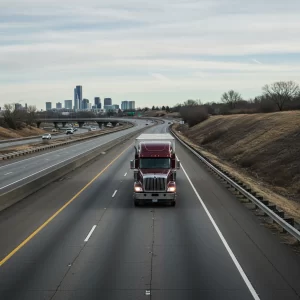
Can my truck be impounded for Clean Truck Check violations?
What Triggers an Impoundment for Clean Truck Violations?
Ensuring Clean Truck Check compliance requires a thorough understanding of California’s Heavy Duty Inspection and Maintenance (HD I/M) and Periodic Smoke Inspection Program (PSIP). Fleet managers and vehicle owners must navigate regulations set forth by the California Air Resources Board (CARB) for heavy-duty vehicles over 14,000 pounds GVWR, including diesel vehicles, alternative fuel vehicles, buses, motorhomes, zero-emission vehicles, and authorized emergency or military tactical vehicles. Compliance involves registering fleet vehicles with CARB, maintaining accurate fleet and DMV registration information, paying annual compliance fees, completing emissions tests such as SAE J1667 smoke opacity tests and onboard diagnostics (OBD) inspections, and submitting results within the designated deadlines. Utilizing electronic emissions inspections, telematics devices, and certified testing facilities ensures timely data submission, proper maintenance monitoring, and seamless compliance with CARB mandates.

The California Clean Truck Check program, administered by CARB under Senate Bill 210, is designed to reduce nitrogen oxide (NOx) and particulate matter (PM 2.5) emissions from heavy-duty diesel vehicles and other regulated vehicles operating in California. The program covers diesel trucks, alternative fuel vehicles, gasoline vehicles, motorhomes, buses, zero-emission vehicles, military tactical vehicles, and vehicles operating under experimental permits or classified as historical. Vehicles must undergo periodic emissions testing using either in-house or PEAQS-equipped facilities, including OBD system checks, smoke opacity tests, and visual and functional inspections. Clean Truck Check in Bermuda Dunes,CA ensures fleet compliance identification, CARB email notifications, and accurate vehicle registration information are integral for timely reporting, ensuring each vehicle meets the regulatory standards and receives a certificate of compliance.
Achieving Clean Truck Check compliance begins with conducting a full fleet inventory to identify heavy-duty vehicles subject to California regulations. Fleet owners must determine applicable compliance deadlines for both in-state and out-of-state vehicles, register vehicles with CARB, pay the required Clean Truck Check fees, and schedule emissions testing. Testing may involve OBD scans, SAE J1667 smoke opacity tests, and portable emission acquisitions systems (PEAQS) inspections, all administered by authorized testers with proper certification. Following test completion, electronic emissions data must be submitted within 90 days, and certificates of compliance should be maintained in each vehicle. Continuous monitoring through telematics or connected dashcams supports ongoing compliance while reducing the risk of blocked DMV registration, fines, or enforcement actions.
While the Clean Truck Check program regulates most heavy-duty vehicles over 14,000 pounds GVWR, certain exemptions apply. Authorized emergency vehicles, military tactical vehicles, historical vehicles, motorhomes registered outside California, vehicles with experimental permits, and new gasoline or diesel vehicles meeting stringent NOx emissions standards may not require standard testing. Fleet managers in California can use Clean Truck Check in Barona Rancheria, CA to help distinguish exempt vehicles from those requiring semi-annual, quarterly, or annual inspections. Understanding these exemptions ensures efficient allocation of resources and prevents unnecessary testing or administrative burdens for vehicles not subject to HD I/M or PSIP requirements.
To Clean Truck Check compliance involves strict adherence to deadlines for emissions testing and data submission. Vehicles are typically subject to twice-per-year OBD inspections, quarterly inspections for older trucks, and once-per-year testing for motorhomes or on-road agricultural vehicles. Semi-annual smoke opacity testing is required for non-OBD diesel vehicles. Compliance deadlines are tied to vehicle registration dates with CARB, and late or missed submissions can trigger citations, blocked DMV registration, civil penalties, or fines up to $10,000 per vehicle per day. CARB email notifications, fleet management software, and connected telematics devices play an essential role in tracking deadlines and scheduling tests proactively to avoid costly enforcement actions.
While Proper submission of emissions test results is critical to achieving compliance. Fleet owners must ensure that OBD data, SAE J1667-compatible smoke opacity tests, and Portable Emission Acquisition System (PEAQS) reports are accurate and electronically submitted to CARB within 90 days. Certificates of compliance should be maintained in vehicles and updated with each inspection cycle. Data submission may include emissions diagnostics reports, real-time vehicle maintenance updates, and automated telematics uploads from connected devices. Accurate reporting ensures fleets remain compliant with California Clean Truck Check program requirements while avoiding citations, emission control label violations, or tampering violations.
Failing Failure to comply with Clean Truck Check regulations can result in severe consequences, including blocked DMV registration, civil penalties, excessive smoke violation citations, tampering violations, refusal of inspection violations, and fines up to $10,000 per vehicle per day. Non-compliant fleets risk operational disruptions and potential restrictions on out-of-state vehicles operating in California. Avoiding penalties requires proactive fleet management, timely emissions testing, accurate reporting, and continuous monitoring through telematics or automated inspection platforms. Maintaining vehicles in good repair, addressing emissions system malfunctions, and training drivers on compliance responsibilities further reduces the risk of fines and ensures environmental and legal obligations are met.
Fleet Leveraging telematics and connected devices can significantly simplify Clean Truck Check compliance. Continuously connected telematics devices, integrated with J1939 and J1979 protocols, allow real-time monitoring of emissions systems, automatic reporting to CARB, and early detection of high-emitting trucks. Extensible dashcams and AI-powered risk detection platforms enhance fleet visibility, track maintenance requirements, and support regulatory submissions. Automation of compliance tasks, including emissions monitoring and certificate tracking, reduces manual reporting, minimizes downtime, and ensures fleets operate efficiently while meeting environmental standards. Centralized fleet management platforms also facilitate Clean Truck Check in Cactus City, CA, asset tracking, driver monitoring, and compliance alerts for timely action.
Technology Maintaining ongoing compliance requires scheduled maintenance, periodic emissions testing, and continuous monitoring of fleet vehicles. OBD-equipped trucks require twice-per-year inspections, while older diesel vehicles are subject to four-times-per-year smoke opacity tests after three years in service. Motorhomes, agricultural vehicles, and non-OBD vehicles follow specific annual or semi-annual testing schedules. Regular calibration of SAE J1667 smoke meters, PEAQS inspections, emissions system checks, and timely data submission are essential to maintaining CARB certification. Continuous upkeep ensures vehicles operate efficiently, reduces air pollution, prevents premature deaths caused by emissions exposure, and aligns with California Clean Truck Check goals for sustainability and public health.

What Triggers an Impoundment for Clean Truck Violations?

Why Registration for Clean Truck Check is Mandatory

Clean Truck Check Penalties: What Happens If You Don’t Comply?

Understanding the Impact of Air Quality Rules on Older Diesel Trucks

Which Truck Types Are Subject to Clean Truck Check?

Why Pre-Emission Trucks Matter for California Regulations